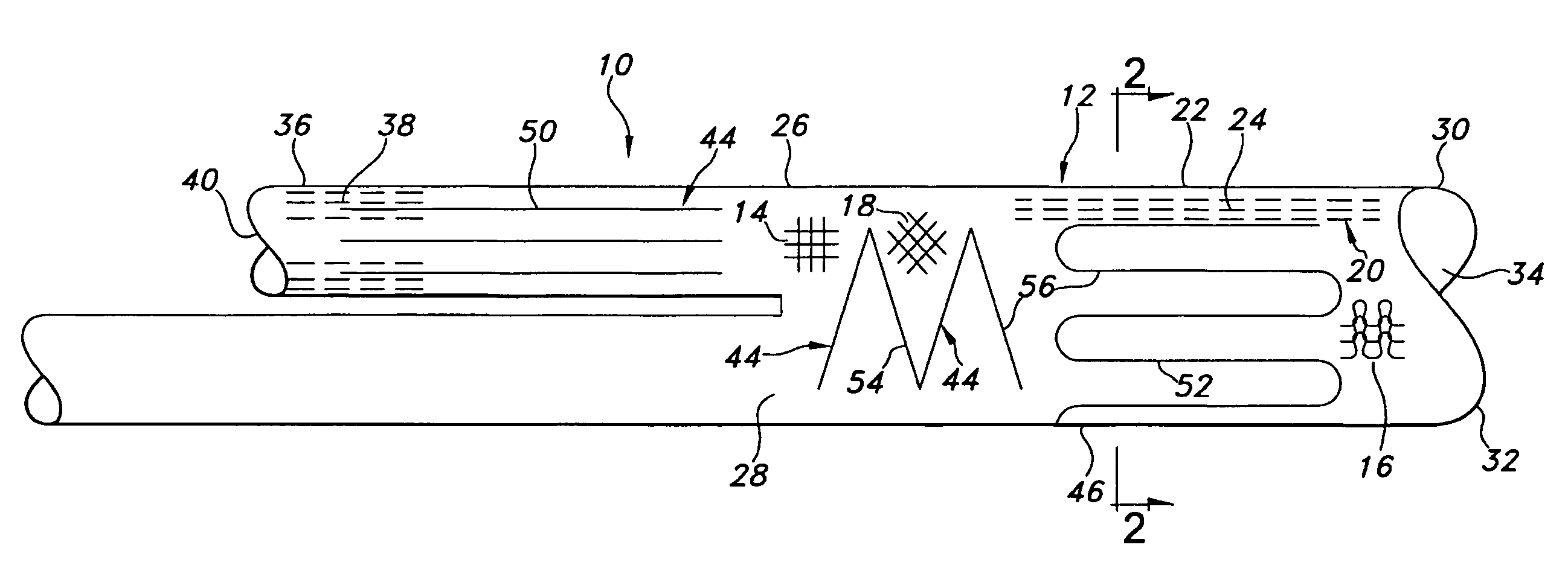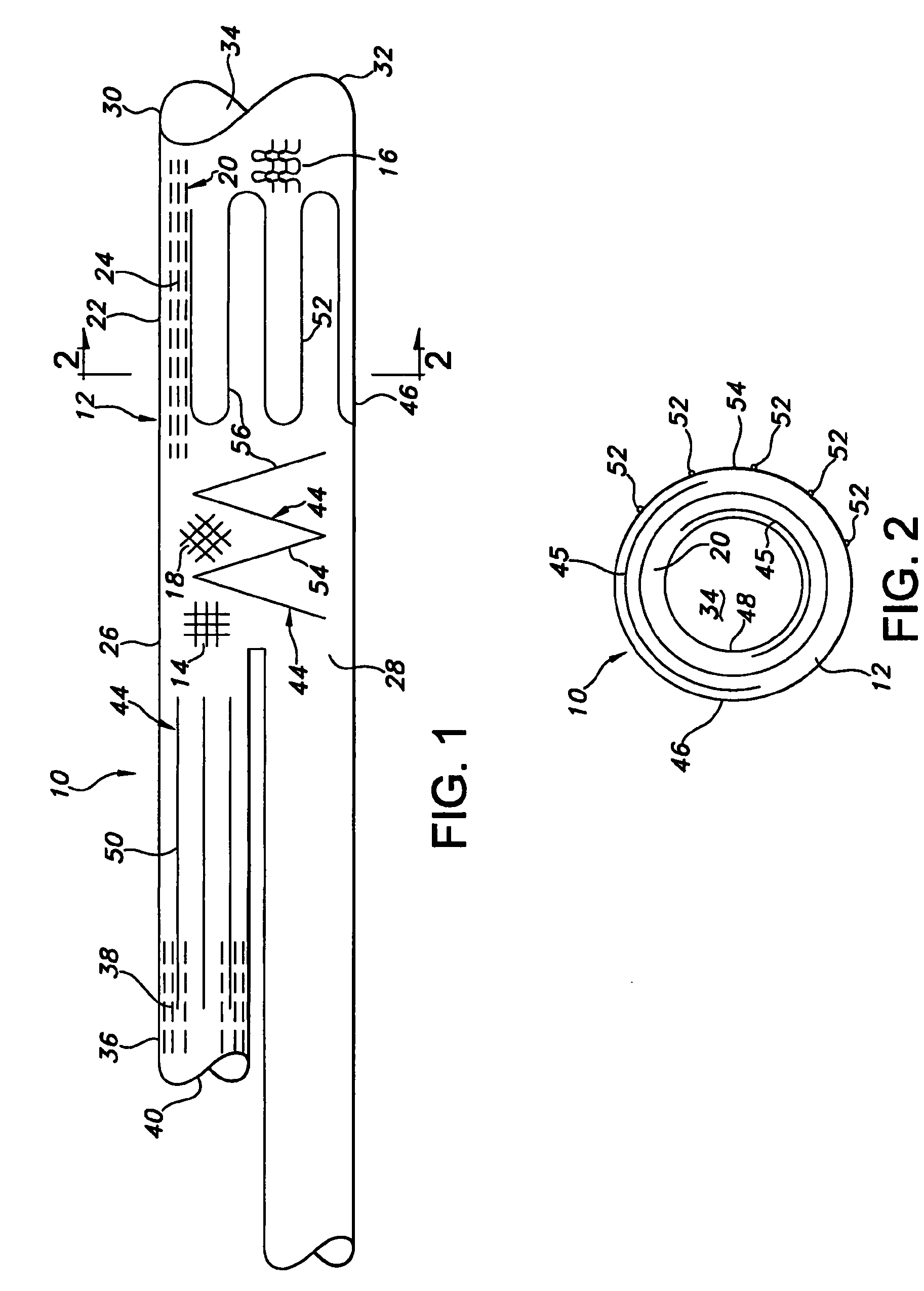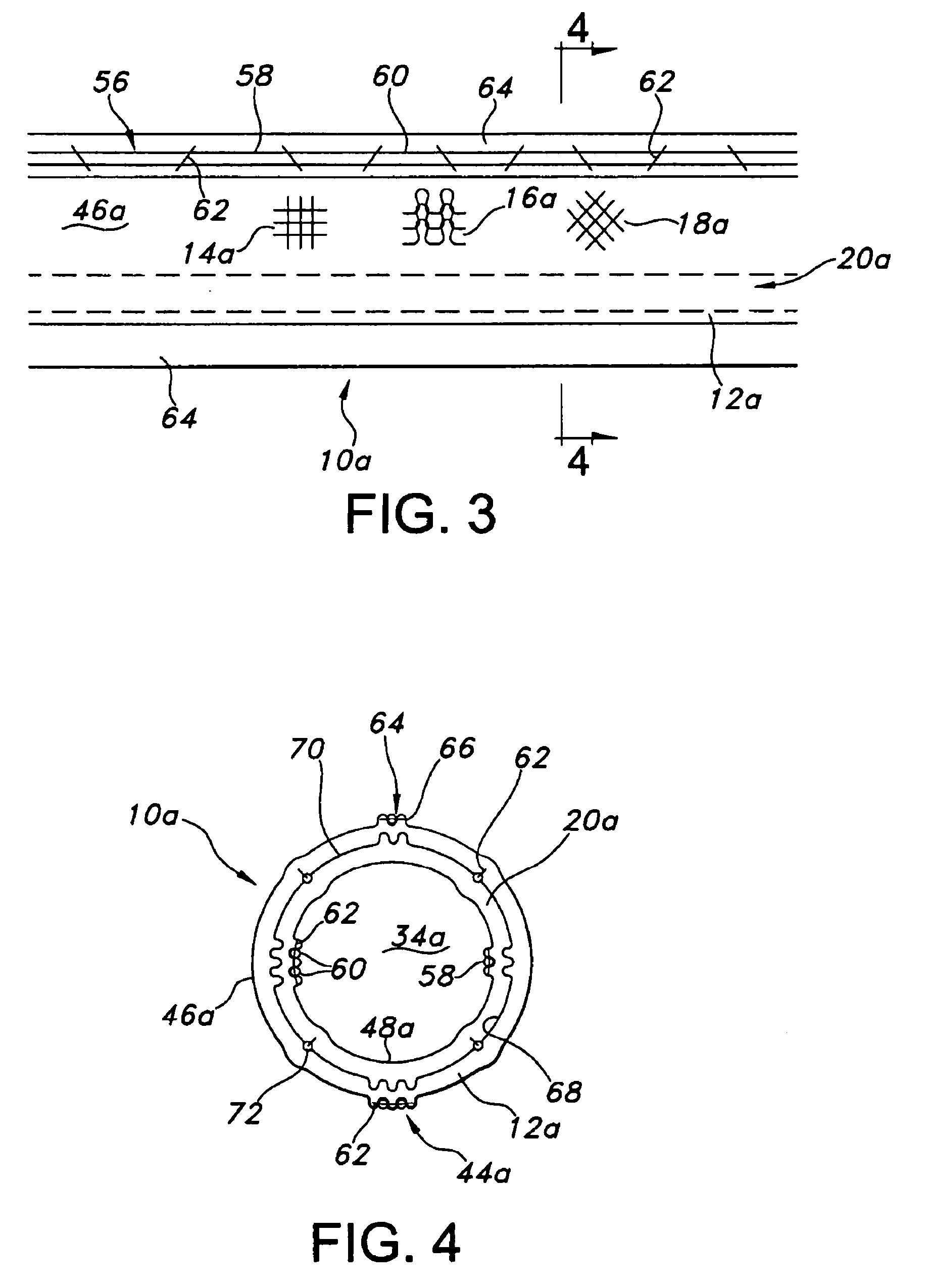Hybrid vascular graft reinforcement
a vascular graft and hybrid technology, applied in the field of hybrid vascular grafts, can solve the problems of limiting the type of material suitable for the stent, adding complexity and additional effort to the assembly of the vascular graft, and achieving the effects of enhancing tissue ingrowth, layer structure, and reducing the thickness of the textile tub
- Summary
- Abstract
- Description
- Claims
- Application Information
AI Technical Summary
Benefits of technology
Problems solved by technology
Method used
Image
Examples
Embodiment Construction
[0030]Referring to the drawings and more particularly to FIGS. 1 and 2, an implantable vascular graft 10 is shown as having an outer tube structure 12 formed of a textile material, which may be knitted, weaved, or braided in alternative embodiments. These alternative embodiments are indicated in FIG. 1 by portions of the outer tube structure 12 being illustrated as weaved 14, knitted 16, and braided 18. It will be understood that the textile of the outer tube structure 12 is typically formed entirely as either weaved 14, knitted 16, and braided 18. It is possible for the outer tube structure 12 to have sections which differ as between weaved 14, knitted 16, and braided 18. Examples of textile material which is weaved 14, knitted 16, and braided 18 are contained in U.S. patent application Ser. No. 10 / 876,212 filed in the U.S. Patent and Trademark Office on Jun. 24, 2004. The entire disclosure of U.S. patent application Ser. No. 10 / 876,212 is hereby incorporated by reference herein. T...
PUM
 Login to View More
Login to View More Abstract
Description
Claims
Application Information
 Login to View More
Login to View More - R&D
- Intellectual Property
- Life Sciences
- Materials
- Tech Scout
- Unparalleled Data Quality
- Higher Quality Content
- 60% Fewer Hallucinations
Browse by: Latest US Patents, China's latest patents, Technical Efficacy Thesaurus, Application Domain, Technology Topic, Popular Technical Reports.
© 2025 PatSnap. All rights reserved.Legal|Privacy policy|Modern Slavery Act Transparency Statement|Sitemap|About US| Contact US: help@patsnap.com



